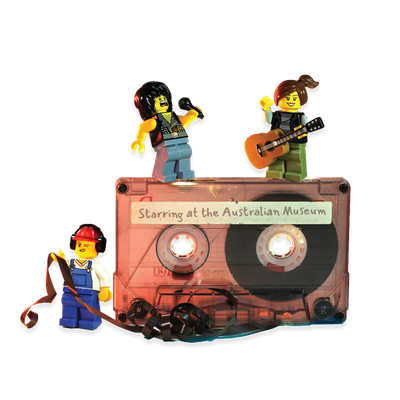Your search returned 56 results
By Page Type
By Tag
- All
- fish (966)
- blog (696)
- fishes of sydney harbour (401)
- First Nations (297)
- Blog (236)
- AMRI (169)
- archives (164)
- Eureka Prizes (145)
- Aboriginal and Torres Strait Islander (135)
- insect (126)
- Ichthyology (124)
- geoscience (109)
- minerals (102)
- climate change (99)
- podcast (94)
- Fish (91)
- Anthropology (89)
- International collections (80)
- Minerals Gallery (78)
- wildlife of sydney (78)
- Labridae (77)
- frog (73)
- gemstone (70)
- photography (65)
- history (63)
- Mollusca (60)
- gem (59)
- staff (59)
- Birds (56)
- Gems (56)
- Indonesia (56)
- education (55)
- shark (55)
- AMplify (54)
- people (53)
- earth sciences (50)
- past exhibitions (50)
- exhibition (49)
- Gobiidae (48)
- sustainability (46)
- Pomacentridae (45)
- Serranidae (44)
- lifelong learning (42)
- science (42)
- Earth and Environmental Science (41)
- Syngnathidae (41)
- Ancient Egypt (40)
- Bali (40)
- bird (40)
- dangerous australians (40)
-
Paradise Riflebird
https://australian.museum/about/history/exhibitions/birds-of-paradise/paradise-riflebird/Paradise Riflebird, Birds of Paradise
-
Wahnes’ Parotia
https://australian.museum/about/history/exhibitions/birds-of-paradise/wahnes-parotia/Wahnes’ Parotia, Birds of Paradise
-
Eastern Parotia
https://australian.museum/about/history/exhibitions/birds-of-paradise/eastern-parotia/Eastern Parotia, Birds of Paradise
-
Striated Pardalote
https://australian.museum/learn/animals/birds/striated-pardalote/Pardalotes generally feed in the canopies of tall eucalypts, making them difficult to see.
-
Willie Wagtail
https://australian.museum/learn/animals/birds/willie-wagtail/The Willie Wagtail is often found in the company of cattle and sheep. They either run behind the moving animal snatching insects as they are disturbed, or sit on the animal's back, darting off to capture a flying insect and then returning to its mobile perch.
-
Modern birds
https://australian.museum/learn/animals/birds/modern-birds/It is clear to us today what is a bird and what is not - as feathers make it difficult to confuse them with any other living animal. Many other features – such as wishbones and specialised joints in the wings – are also unique. We place birds in a major group called Aves.
-
Discover more
2025 Australian Geographic Nature Photographer of the Year
Special exhibition
Now open -
Discover more
Unfinished Business
Special exhibition
Now open -
Discover more
Wansolmoana
Permanent exhibition
Open daily -
Find out more
Burra
Permanent kids learning space
10am - 4.30pm![]()
-
Discover more
Minerals
Permanent exhibition
Open daily![]()




